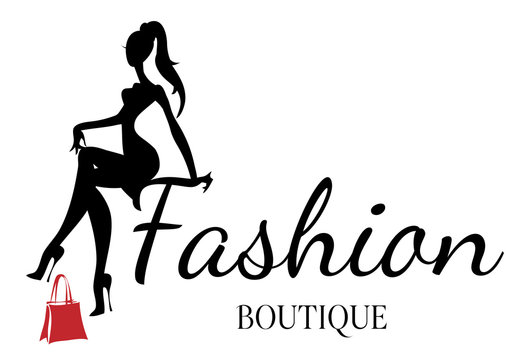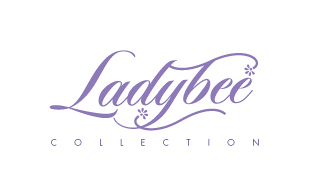A Newbie's Overview to Navigating the Boutique Fashion Scene
A Newbie's Overview to Navigating the Boutique Fashion Scene
Blog Article
Sustainable Fashion: Exactly How Eco-Friendly Apparel Is Forming the Future of Style
As the apparel industry deals with raising analysis over its ecological impact, the rise of sustainable fashion provides an appealing choice that straightens design with eco-friendly duty. Using innovative materials such as recycled fibers and plant-based fabrics, alongside advanced methods like digital and 3D printing, designers are redefining what it means to be fashionable in the modern age. Concurrently, the expanding appeal of upcycling and second hand society is promoting a shift towards a circular economy. How does this activity absolutely affect the future trajectory of fashion, and what challenges lie in advance in its extensive adoption?
Innovative Lasting Materials
As the fashion market grapples with its ecological impact, ingenious lasting products have emerged as an essential solution for minimizing eco-friendly footprints. These materials not only lower dependency on fossil fuels however likewise decrease harmful chemical usage and water usage.
In addition to plant-based materials, developments in biofabrication have caused the development of lab-grown fabrics. Mycelium natural leather, originated from mushroom origins, presents a flexible and biodegradable option to animal leather. Its production results in considerably lower carbon emissions and water use, making it an extra lasting alternative for stylist seeking to align with environmentally friendly practices.
Recycled products are additionally obtaining traction, with polyester made from recycled plastic bottles standing for a substantial innovation. This advancement not only diverts plastic waste from oceans and landfills yet additionally minimizes energy intake contrasted to generating virgin polyester. Together, these materials emphasize the capacity for a more lasting style industry, leading the method for environmentally conscious style and production.
Eco-Conscious Production
Structure on the developments in lasting materials, the apparel industry is also re-evaluating its production processes to further minimize environmental influence. Key approaches include minimizing water usage, decreasing carbon exhausts, and getting rid of unsafe chemicals. By embracing closed-loop systems, suppliers aim to reuse water and energy successfully, considerably diminishing waste. The integration of renewable resource resources, such as solar and wind power, right into production centers even more reduces dependence on nonrenewable fuel sources.
An additional vital aspect is the decrease of toxic chemicals generally utilized in dyeing and finishing textiles. Eco-conscious suppliers are shifting towards plant-based dyes and waterless dyeing technologies, which not just secure local ecosystems however additionally boost employee safety. Advancements like digital printing decrease textile waste and power usage, supplying a cleaner choice to traditional methods.
In addition, transparency and traceability have ended up being paramount. With the development of blockchain technology, business can currently provide comprehensive insights right into their supply chains, making certain moral and eco-friendly techniques at each action. This openness builds customer depend on and motivates brands to keep high sustainability requirements. As the demand for eco-conscious items expands, makers are forced to introduce, making certain that the future of style is both sustainable and trendy.
The Rise of Upcycling
Upcycling, a transformative method in lasting style, involves creatively repurposing disposed of materials into brand-new, premium items. This cutting-edge approach not just decreases waste but also lessens the need for basic materials, thereby decreasing the environmental impact of garments production. By reimagining and rebuilding existing things, developers and style brands are able to instill creativity into their collections while advertising ecological obligation.

Additionally, the upcycling motion has encouraged local business and independent designers, who usually lead in technology because of their agility and creative thinking. By maximizing the plentiful availability of extra materials, these entities add to a round economy, showing that fashion can be both stylish and lasting. With upcycling, the sector takes significant strides in the direction of an extra aware and accountable future.
Thrift Culture's Impact
The blossoming thrift society considerably improves the landscape of sustainable style, emphasizing the value of mindful usage. This social shift urges consumers to accept pre-owned garments, thereby minimizing the need for new garment manufacturing and minimizing environmental influence. Second hand shopping not just expands the lifecycle of clothes however additionally lowers the carbon impact connected with manufacturing, delivering, and dealing with clothing.
A vital aspect of thrift society is its democratization of style. By offering a broad variety of designs from numerous eras at budget-friendly rates, thrift stores make fashion available to a more comprehensive target market. This accessibility promotes a sense of uniqueness and creative thinking, as customers mix and suit one-of-a-kind pieces to curate personalized wardrobes without contributing to the fast fashion cycle.
Additionally, second hand culture promotes circularity in fashion, lining up with the principles of a circular economic climate. By recirculating garments, the like this cycle of waste is interrupted, and sources are saved. This method supports a shift from a linear "take-make-dispose" model to a more sustainable framework. As more developers and consumers accept thrift culture, the fashion business is forced to adapt, integrating sustainable practices to fulfill the expanding need for eco-conscious options.

Future Trends in vogue
Style's evolution is progressively formed by technical innovations and sustainability-driven initiatives. One noticeable trend is the rise of digital style, where digital garments can be put on in enhanced reality environments, substantially decreasing textile waste.
In addition, the combination of blockchain modern technology supplies brand-new possibilities in transparency and traceability, allowing consumers to verify the sustainability credentials of their clothes. boutique fashion. This makes sure responsibility in supply chains and advertises honest sourcing methods. 3D printing is yet one more advancement that guarantees to reinvent producing procedures by allowing on-demand production, thus decreasing excess inventory and waste
Additionally, the development of bio-fabricated materials, such as lab-grown natural leather and plant-based fabrics, offers lasting options to conventional materials. These innovations lower dependence on pet products and resource-intensive crops. As these modern technologies grow, they are poised to transform the style landscape, combining style with sustainability. The future of fashion, therefore, hinges on a smooth blend of modern technology, technology, and environmental obligation.
Verdict
The improvement of the style industry via sustainable techniques indicates a critical change towards environmental liability. This evolution not only lines up style with ecological sustainability but likewise establishes a criterion for future trends focused on obligation and technology.
As the style industry deals with boosting analysis over its ecological impact, the rise of sustainable fashion uses an encouraging alternative that aligns style with environmental obligation.As the style sector grapples with its ecological influence, cutting-edge lasting products have actually emerged as a crucial service for minimizing eco-friendly impacts. With view it now each other, these products highlight the capacity for a much more lasting fashion market, paving the way for ecologically conscious design and production.
Building on the innovations in sustainable products, the style sector is likewise re-evaluating its production processes to better lower ecological influence. boutique fashion.Upcycling, a transformative method in sustainable fashion, involves artistically repurposing thrown out products into new, high-quality products
Report this page